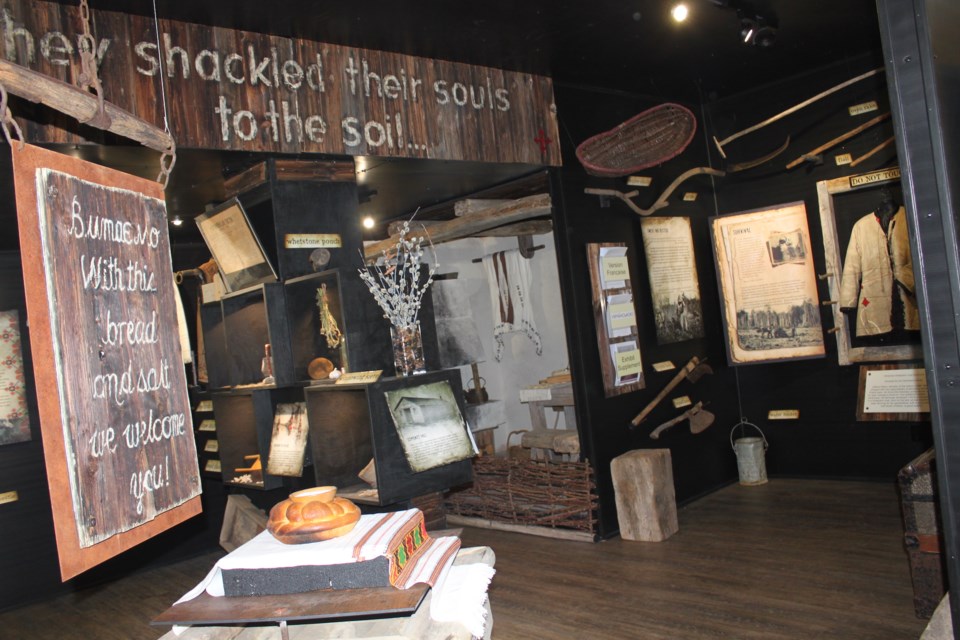“They shackled their souls to the soil,” fittingly describes the collection of artifacts and photographs that tell a story of ingenuity and tenacity, of survival and hope against all odds.
The exhibit has been carefully curated to tell the local stories of the Ukrainian families who settled here, names that are still very familiar in the area today.
“No one has really told our local story. So, we made a real conscious effort to get what happened here – local families, local artifacts, local photographs,” Amil Shapka said of his desire to bring the stories to light before they are lost forever.
“I realized that my kids have no knowledge of what their grandparents went through, and I really believe that something of value was about to be lost so I thought we’ve got to record that history.”
Shapka may have been the driving force behind the exhibit, but he said many people worked alongside him to make it a reality. People opened up their hearts and their attics to him as the collection for the exhibit began to take shape.
Shapka said the intent was never to romanticize the story of the Ukrainian settlers but rather to be accurate in its depiction.
“I didn’t only want to capture the history and the story, but I also really wanted to capture the character of these people - their resilience, their toughness, the hardships they endured.”
St. Paul is on the edge of what Shapka refers to as the “Borscht belt” and it is rich with the history of those that carved out their lives here in the Canadian wilderness.
“They settled in this area because of the character of the land. There was better land south, but they wanted the trees because they needed trees for wood and building. In the old country, if you had land with trees, you were a prince, you were a king. So, everybody thought the Ukrainians were crazy because they took all this hilly, crappy land with trees and the Ukrainians were in heaven because they didn’t have to pay for it. That is how our people ended up here,” Shapka said, expressing his amazement at the stories he has been told as he built the exhibit.
It is how he kept himself busy through the pandemic, researching, contacting people and collecting pieces so that these stories could be shared. The result is an emotionally moving display of breaking the land by hand, of women left behind on the land with children, surviving on next to nothing, as their husbands went off for months at a time seeking work in coalmines and the like to earn what little they could to bring home to their families and continue to build a life in this new world.
“It kept me sane during COVID, we spent our time here,” Shapka said of the work that went into curating the display. “It was such a joy to reconnect to my roots and get into the history. I’ve met so many good people all over through this.”
While many hours have gone into getting things just right, he believes the work of all involved has been worth it.
“People are touched by it, people are impressed by it, so I think - mission accomplished,” Shapka said of the response he’s received to the exhibit. “Anybody of Ukrainian heritage should come and see it, but I think this is a story that is underappreciated and hasn’t be told, so I think anybody in this area would find it of interest. I think it’s interesting enough on its own but in my heart, if you have any kind of Ukrainian blood going through your veins, I think you need to reconnect with your story.”
A good opportunity to do just that comes this Saturday, Sept. 11, as the museum hosts an event to celebrate the 130th anniversary of Ukrainian settlement in Canada. The celebration begins at 1 p.m. and will feature Ukrainian-themed activities including bread-making and live Ukrainian music.



